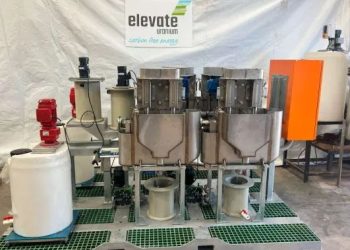
Paladin Energy says it has revised its uranium production guidance for the fiscal year 2025, lowering its forecast to 3.0-3.6 million pounds (Mlb) of uranium from its initial estimate of 4.0-4.5 Mlb.
This decision follows lower-than-expected production results for October and reflects the ongoing challenges and operational variability the company has encountered in ramping up production at its Langer Heinrich Mine (LHM).
“As a result of the lower than expected production results for October and noting the ongoing challenges and operational variability experienced to date in ramping up production at the LHM, Paladin has determined to revise its FY2025 production guidance to 3.0-3.6 Mlb (previously 4.0-4.5 Mlb) and withdraw all other guidance in relation to FY2025,” a release by the company read.
The company reported that the increased range of potential production outcomes will materially impact Paladin’s unit operating costs and the realised price for uranium sales.
Given these developments, Paladin has withdrawn all other guidance for FY2025 and announced that it will reassess its forecast capital expenditures based on LHM’s operational performance to date.
Paladin reported that despite challenges with throughput and grade variability at the LHM in October, it saw some offsetting benefits from improved recovery rates, which reached approximately 87% for the month.
The company announced a planned shutdown in late November 2024, scheduled to last around two weeks, during which various operational upgrades will be implemented.
This shutdown will also allow the LHM to fill its water storage facilities, creating a reserve to mitigate potential supply disruptions. NamWater is also optimising its infrastructure to increase pipeline capacity and ensure a more reliable supply to the LHM.
In addition to these upgrades, Paladin is working on installing additional water recovery equipment, conducting water optimisation studies, and implementing projects to address bottlenecks and improve plant throughput.
Currently, LHM is about seven months into a 21-month ramp-up period, and production levels are anticipated to rise as the ramp-up progresses and higher-grade ore becomes available for processing in the latter half of calendar year 2025.







